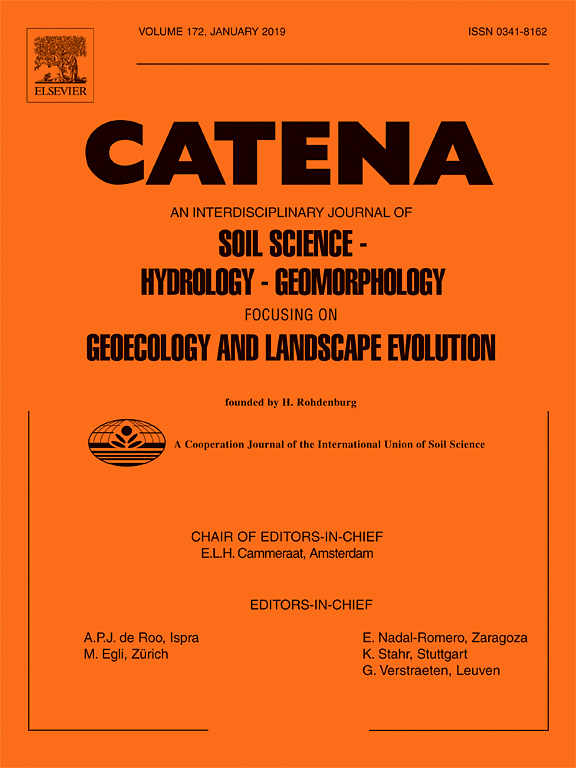Ver ítem
- xmlui.general.dspace_homeCentros Regionales y EEAsCentro Regional La Pampa - San LuisEEA AnguilArtículos científicosxmlui.ArtifactBrowser.ItemViewer.trail
- Inicio
- Centros Regionales y EEAs
- Centro Regional La Pampa - San Luis
- EEA Anguil
- Artículos científicos
- Ver ítem
Light acidification in N-fertilized loess soils along a climosequence affected chemical and mineralogical properties in the short-term
Resumen
Some evidences indicate that N-fertilization of crops decreased pH values of loess soils of the Argentinean Pampas in the last decades. We analyzed the A-horizons of four N-fertilized (F) and non-fertilized (NF) paired soils, developed on similar parent materials, within a climatic sequence (ustic to udic water regimes), and measured: 1) the extent of pH changes, 2) how these changes affected chemical and mineralogical soil properties and 3) how the
[ver mas...]
Some evidences indicate that N-fertilization of crops decreased pH values of loess soils of the Argentinean Pampas in the last decades. We analyzed the A-horizons of four N-fertilized (F) and non-fertilized (NF) paired soils, developed on similar parent materials, within a climatic sequence (ustic to udic water regimes), and measured: 1) the extent of pH changes, 2) how these changes affected chemical and mineralogical soil properties and 3) how the soils, according to their H+ buffering substances, can react in the future if N-fertilization and acidification continue. Results indicated that all F- and NF soils were lightly acidified (differences between pHW and pHKCl higher than 1.0) and that fertilization produced pH decreases in all studied soils, but particularly in those with udic water regimes, in agreement with their longer N-fertilization histories. Fertilized ustic soils showed less crystalline illites and kaolinites and higher contents of amorphous Al oxides than NF soils. It remains unclear if the higher contents of amorphous Al are related with the dissolution of phyllosilicates, the transformation of the abundant volcanic glasses of these soils or both processes at the same time. The cation exchange capacity (CEC) and the percent of base saturation (V) did not change between F- and NF soils, probably due to the large influence of soil organic matter (SOM) in the studied soils. If N-fertilization, and consequently pH decreases continue, soils placed in both the moistest- (Argiudolls) and the driest extremes of the climosequence (Haplustolls) would be the less affected. This is because udic soils contain high SOM as well as illitic clays and silts while ustic soils contain free lime and high density charged clay minerals, which have high H+ neutralization capacity. The most affected soils by acidification should be those placed in the intermediate zone of the climosequence (Hapludolls), which have low amounts of substances with high buffer capacity.
[Cerrar]

Autor
Iturri, Laura Antonela;
Buschiazzo, Daniel Eduardo;
Fuente
CATENA 139 : 92-98. (April 2016)
Fecha
2016-04
Editorial
Elsevier
ISSN
0341-8162
Formato
pdf
Tipo de documento
artículo
Palabras Claves
Derechos de acceso
Restringido
 Excepto donde se diga explicitamente, este item se publica bajo la siguiente descripción: Creative Commons Attribution-NonCommercial-ShareAlike 2.5 Unported (CC BY-NC-SA 2.5)
Excepto donde se diga explicitamente, este item se publica bajo la siguiente descripción: Creative Commons Attribution-NonCommercial-ShareAlike 2.5 Unported (CC BY-NC-SA 2.5)

